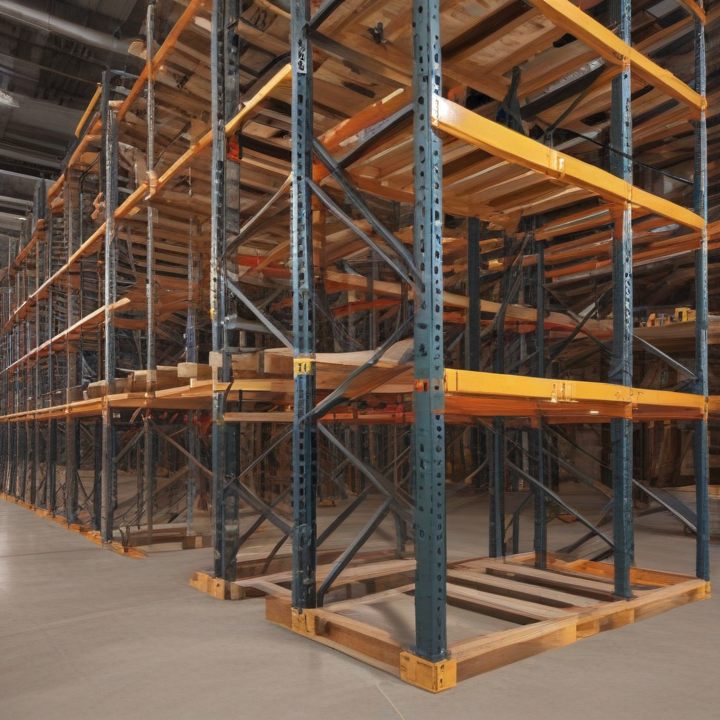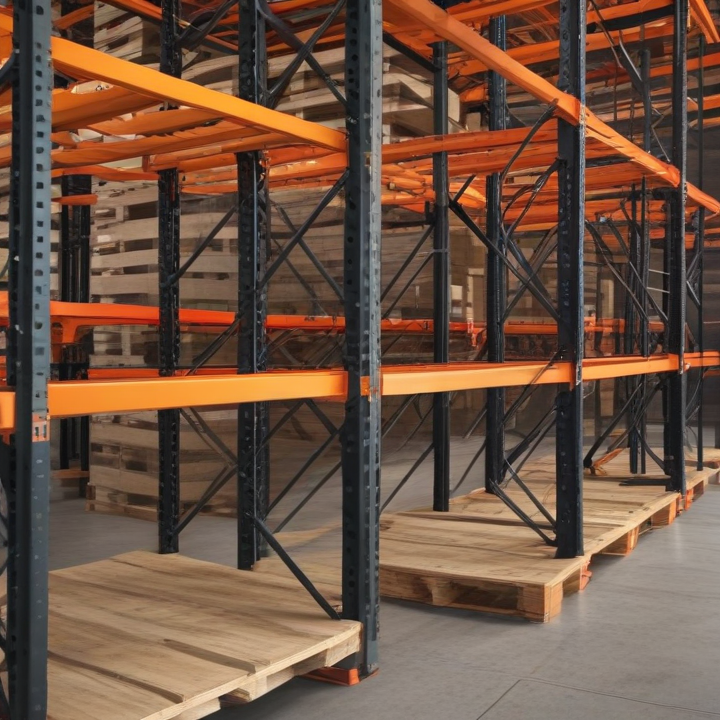pallet rack installation Safety Certifications
When it comes to installing pallet racks, ensuring safety is paramount. Here are key safety certifications and standards to consider:
1. OSHA (Occupational Safety and Health Administration):
– Compliance with OSHA standards (29 CFR 1910.176) is crucial. This regulation covers material handling and storage, addressing safe installation, use, and maintenance of pallet racks.
2. RMI (Rack Manufacturers Institute):
– The RMI certification demonstrates that a pallet rack meets specific safety and performance standards. The RMI publishes the “ANSI MH16.1” standard, which provides guidelines for the design, testing, and utilization of industrial steel storage racks.
3. SEMA (Storage Equipment Manufacturers Association):
– SEMA guidelines and codes of practice offer comprehensive instructions for the safe installation and use of storage equipment. While more UK-centric, they are respected and useful worldwide.
4. ANSI (American National Standards Institute):
– ANSI MH16.1/ASCE 7: The American National Standard for the design, testing, and utilization of industrial steel storage racks. This standard ensures racks are structurally sound and reliably installed.
5. Training and Certification Programs:
– Powered Industrial Truck (PIT) Certification: Ensure that personnel operating forklifts or other lifting equipment are certified and trained per OSHA Standard 29 CFR 1910.178.
– Employer-Specific Safety Training: Companies may have specialized training for employees on safe installation practices to ensure adherence to all applicable standards.
Best Practices:
– Conduct a Pre-Installation Risk Assessment: Identify potential hazards and ensure the installation environment is safe.
– Verify proper anchoring: Confirm that racks are securely anchored to prevent tipping or collapsing under load.
– Regular Inspection and Maintenance: Schedule routine checks to ensure racks remain in compliance with safety standards.
By adhering to these certifications and best practices, companies can ensure the safe and effective installation of pallet rack systems.
List Reference Technical Parameters of “pallet rack installation”
Pallet rack installation requires meticulous attention to various technical parameters to ensure safety, stability, and efficiency. Below are key reference technical parameters:
1. Load Capacity:
– Specify the maximum load per beam level and per upright frame.
– Consider the weight of both the pallets and the goods stored.
2. Rack Dimensions:
– Height, depth, and width of the racks.
– Aisle width between rack rows for machinery access, typically 3-4 feet for standard forklifts.
3. Floor Load-Bearing Capacity:
– Ensure the warehouse floor can support the total weight of the loaded pallet racking system.
– Concrete floor specifications, usually requiring a thickness of at least 6-8 inches.
4. Upright Frame Specifications:
– Material: Typically steel, with a galvanized or powder-coated finish for durability.
– Bracing: Horizontal and diagonal bracing details to enhance structural integrity.
5. Beam Details:
– Beam length matched to pallet size, usually 4-12 feet.
– Beam end connectors and locking mechanisms to secure beams in place.
6. Seismic Considerations:
– Design parameters adhering to local seismic codes in earthquake-prone areas, including rack height limitations and additional bracing.
7. Anchor Bolts:
– Type and size of anchor bolts needed to secure uprights to the floor.
– Placement and depth specifications to ensure stability.
8. Safety Features:
– Safety pins and clips to prevent beam dislodgment.
– Column protectors and end-of-aisle guards to prevent impact damage.
– Load signage indicating maximum allowable load.
9. Tolerances and Clearances:
– Vertical clearance between loaded racks and sprinkler systems.
– Allowances for rack deflections and deformations under load.
10. Assembly Instructions:
– Detailed step-by-step guide for assembly, including use of appropriate tools.
– Safety checks and inspections post-installation.
Compliance with these technical parameters ensures the rack system is safe, functional, and durable. Regular inspections and maintenance are also vital to prolong the life and performance of the pallet racking system.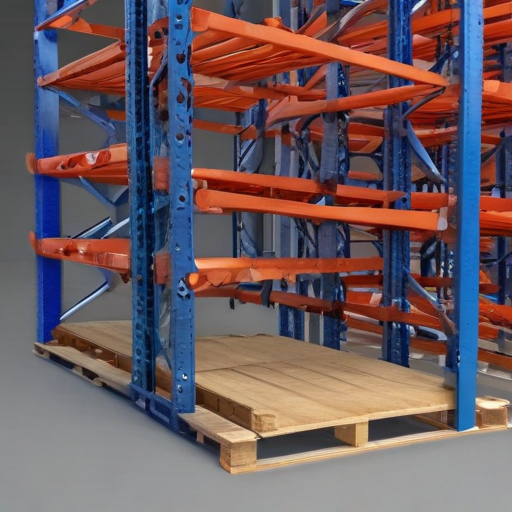
List Product features of “pallet rack installation”
Sure! Here are the key product features of a “pallet rack installation”:
1. Versatility and Customization: Pallet rack installations can be customized to fit various warehouse layouts and inventory needs. They can be adjusted for different widths and depths, suiting a range of pallet sizes and weights.
2. Load Capacity: These systems are designed to handle significant loads, ensuring that heavy merchandise can be safely and efficiently stored.
3. Space Optimization: Pallet racks utilize vertical space, maximizing storage capacity within a warehouse. They allow for easy stacking and accessibility, contributing to better space management.
4. Durability and Strength: Typically made from high-quality steel, these racks are built to withstand the rigors of industrial use. They resist wear and tear, ensuring long-term reliability.
5. Safety Features: Designed with safety in mind, pallet racks often incorporate features such as safety pins, locking mechanisms, and load-bearing beams to prevent accidents and ensure the secure placement of goods.
6. Ease of Assembly and Installation: Many pallet rack systems feature bolt-less designs or easy-to-assemble components, simplifying the installation process. Professional installation services can also be hired for optimal setup.
7. Accessibility: These racks are configured to allow easy forklift access, facilitating the swift loading and unloading of pallets. Open design structures help maintain visibility and access to all stored items.
8. Scalability: Pallet rack installations are scalable, allowing for expansion as storage needs grow. Additional racks can be seamlessly integrated into the existing system.
9. Cost-Effectiveness: By optimizing storage space and improving operational efficiency, pallet racks can provide substantial cost savings in warehouse management.
10. Compliance and Standards: Many pallet rack systems meet industry standards and regulations, ensuring they are safe and appropriate for various types of goods.
These features make pallet rack installations a vital component in efficient warehouse management, enhancing both storage capacity and operational productivity.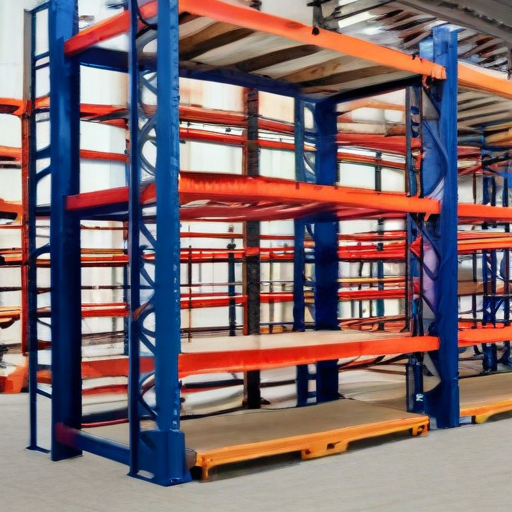
List Various Types of “pallet rack installation”
Pallet rack installation is a critical process in optimizing warehouse space and ensuring efficient inventory management. Here are the various types:
1. Selective Pallet Racking:
– Single-Deep: The most common type, offering direct access to every pallet.
– Double-Deep: Increases storage capacity but requires a specialized forklift for deeper reach.
2. Drive-In/Drive-Through Racking:
– Drive-In Racking: High-density storage where forklifts enter the rack to store pallets.
– Drive-Through Racking: Similar to drive-in but allows access from both ends for FIFO (First In, First Out) stock rotation.
3. Push-Back Racking:
– Utilizes nested carts that move backward as new pallets are added, offering higher density but retaining selective access.
4. Pallet Flow Racking:
– Also known as gravity flow, uses inclined rollers for automatic stock rotation (FIFO). Pallets are loaded from one side and retrieved from the opposite end.
5. Cantilever Racking:
– Ideal for long, bulky items like lumber or pipes, offering easy loading and unloading with adjustable arms.
6. Drive-Thru Pallet Racking:
– Allows forklifts to enter the storage area from either end for more accessible loading and retrieving, often used for high-density storage.
7. Mobile Pallet Racking:
– Mounted on mobile bases that roll along tracks, this system can increase storage capacity by eliminating unused aisle space.
8. Carton Flow Racking:
– Designed for smaller items, this system uses gravity-fed roll tracks to facilitate picking operations, commonly used in order-picking environments.
9. Double Deep Pallet Racking:
– Involves placing one rack behind another to double storage capacity but requires extension equipment for access.
10. Mezzanine Pallet Racking:
– Incorporates a mezzanine level above the racks for additional storage or office space, optimizing vertical space utilization.
Each type of pallet racking system has its unique benefits and limitations, making it suitable for specific inventory types, warehouse layouts, and operational requirements.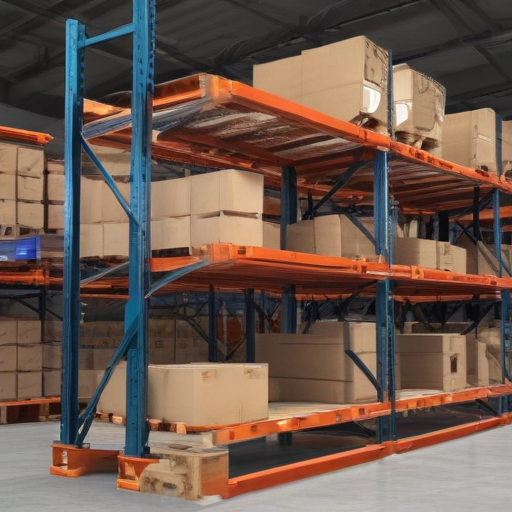
List Application of “pallet rack installation”
Pallet rack installation is a crucial aspect of warehouse and storage management, offering substantial benefits across various industries. Here are some key applications:
1. Inventory Management:
– Organized Storage: Facilitates structured organization, aiding in efficient inventory management.
– Easy Access: Enhances quick and easy access to goods, reducing retrieval time.
2. Space Optimization:
– Maximized Storage: Utilizes vertical space to maximize storage capacity in limited footprints.
– Flexible Layouts: Provides adaptable configurations for diverse storage needs and floor plans.
3. Safety and Compliance:
– Stability: Ensures stability and reduces the risk of injury through secure and standardized shelving.
– Compliance: Adheres to safety regulations and guidelines specific to industrial storage.
4. Operational Efficiency:
– Streamlined Operations: Improves workflow by categorizing products, leading to more systematic restocking and retrieval processes.
– Reduced Downtime: Minimizes downtime caused by searching for misplaced items and enhances overall productivity.
5. Cost Savings:
– Reduced Overhead: Lowers the necessity for additional storage facilities by expanding storage capabilities within existing spaces.
– Longevity: Durable construction prolongs lifespan, offering long-term cost efficiency.
6. Versatility:
– Diverse Industry Use: Applicable across sectors including retail, manufacturing, automotive, and distribution centers.
– Customization: Tailored designs meet specific storage requirements, from heavy goods to light merchandise.
7. Scalability:
– Future Expansion: Easily modified and expanded to accommodate growing inventory needs without extensive overhauls.
In summary, pallet rack installation is pivotal for optimizing storage, enhancing safety, promoting operational efficiency, and providing scalable and versatile solutions. These benefits are invaluable for businesses seeking to improve their warehouse management and overall operational efficiency.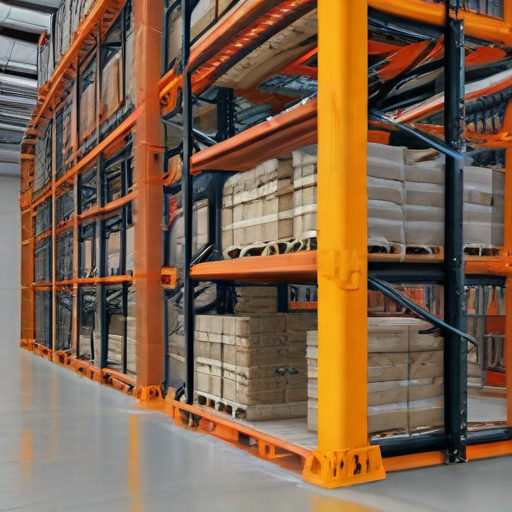
List Buyer Types of “pallet rack installation”
When it comes to “pallet rack installation,” the types of buyers typically span across various industries and sectors depending on their storage and logistics needs. Here are some common buyer types:
1. Retail Chains and Supermarkets: Retailers with large inventories benefit from pallet racks to keep products organized and easily accessible. They frequently update their storage solutions to accommodate new products and seasonal inventory changes.
2. Warehouses and Distribution Centers: These facilities require extensive shelving systems to manage and move large quantities of goods efficiently. Pallet racks maximize vertical space and streamline the workflow.
3. Manufacturing Plants: Industrial operations often need robust storage solutions for raw materials, work-in-progress items, and finished products. Pallet racks help in organizing heavy and voluminous goods safely.
4. E-commerce Fulfillment Centers: With the rise of online shopping, fulfillment centers need efficient storage and quick access to a wide variety of products. Pallet racks facilitate order picking and inventory management.
5. Food and Beverage Companies: These companies require specialized pallet racking systems that comply with regulatory standards for hygiene and safety. Temperature-controlled environments like cold storage also use pallet racks.
6. Automotive Parts Suppliers: Given the diversity and size of automotive parts, these suppliers need versatile storage systems that can handle different weights and dimensions efficiently.
7. Logistics and Freight Companies: To manage the flow and storage of goods from different clients, logistics firms use pallet racking systems to keep everything organized and maintain operational efficiency.
8. Pharmaceutical Firms: These companies need reliable storage solutions for sensitive and critical products. Pallet racks ensure organized storage that adheres to strict guidelines for safety and traceability.
9. Educational Institutions and Libraries: Even educational institutes and large libraries may use pallet racks to store books, supplies, and archival materials efficiently.
10. Government and Military Agencies: These organizations require robust and secure storage for equipment, supplies, and sensitive materials, benefiting from the durability and organization that pallet racks provide.
In summary, pallet rack installation buyers range from retail and e-commerce to manufacturing, logistics, and specialized sectors like pharmaceuticals and government, each with distinct storage and operational efficiency needs.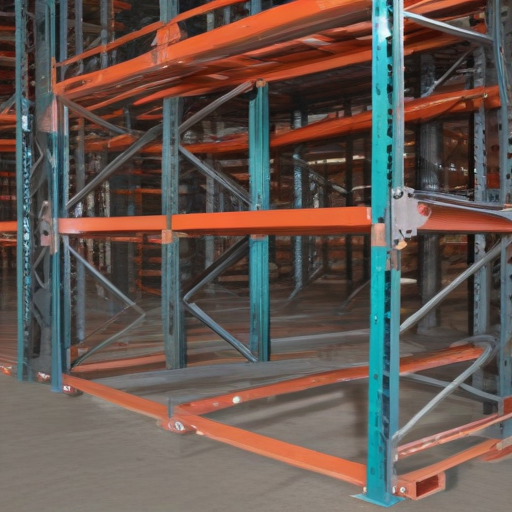
List “pallet rack installation” Project Types for Different Industries
Pallet rack installation is fundamental to optimizing space and enhancing storage capabilities in various sectors. Here are key project types for different industries:
1. Warehousing and Distribution Centers:
– Bulk Storage Racks: To store large quantities of inventory, maximizing vertical and horizontal space.
– Selective Racking: Enables easy access to individual pallets, crucial for fast-moving goods.
– Drive-In/Drive-Through Racks: For high-density storage, catering to large quantities of similar products.
2. Retail:
– Light Duty Racking: Ideal for small to medium-sized items, such as in grocery stores and department stores.
– Multi-Tier Racking: Maximizes vertical space, useful for storing bulk items in large retail outlets.
3. Manufacturing:
– Heavy-Duty Racking: For storing raw materials, semi-finished, and finished goods.
– Cantilever Racks: Optimal for long items like pipes, lumber, or metal extrusions.
4. Automotive:
– Tyre Racks: To store various sizes of tyres horizontally or vertically.
– Parts Storage: Inclusive of bin shelving for smaller components and selective racking for larger parts.
5. Cold Storage:
– Mobile Pallet Racks: Allow for high-density storage while maintaining access in low-temperature settings.
– Selective Racking with Mesh Decking: Provides airflow around frozen goods.
6. Pharmaceuticals:
– Regulated Environment Racking: Ensures compliance with storage standards, often involving temperature and humidity controls.
– FIFO (First In, First Out) Racks: Essential for managing expiration-sensitive inventory.
7. Food and Beverage:
– Drive-In Racks: Optimal for storing large quantities of homogeneous products.
– Push Back Racks: Effective for managing high turnover items with easy pallet retrieval.
8. E-commerce Fulfillment Centers:
– Multi-Level Racking Systems: Maximizes space and allows for efficient picking and packing operations.
– Carton Flow Racks: Facilitates inventory management and quick access to goods for high-speed order fulfillment.
By tailoring pallet rack installations to industry-specific needs, businesses can enhance operational efficiency, safety, and storage capacity.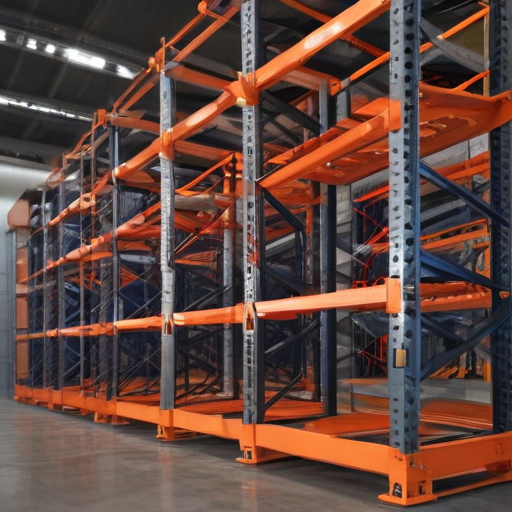
pallet rack installation Accessories Upgrades and Custom Manufacturing Options
Pallet rack systems are essential warehouse solutions designed to store inventory efficiently and safely. Enhancing these systems with the right accessories, upgrades, and custom manufacturing options can significantly improve performance and productivity.
Accessories
1. Wire Decking: Provides a stable surface for pallet storage and enhances safety by preventing items from falling.
2. Column Protectors: Safeguard rack columns from forklift damage and extend the lifespan of the racking system.
3. Row Spacers: Maintain consistent spacing between rows, ensuring stability and alignment.
4. Safety Bars: Prevent pallets from dislodging, providing an extra layer of security.
5. Load Stops: Keep pallets from being pushed too far, protecting products and workers.
Upgrades
1. Mobile Racking: Converts static racks into mobile units to maximize space utilization and improve access to stored items.
2. Automated Storage and Retrieval Systems (AS/RS): Integrates technology to automate the storage and retrieval process, increasing efficiency and reducing labor costs.
3. Beam Level Labels: Implement magnetic or adhesive labels for easy identification and improved inventory management.
4. Pallet Flow Racking: Incorporates roller systems allowing for first-in, first-out (FIFO) inventory management.
Custom Manufacturing Options
1. Tailored Dimensions: Design racks to fit specific warehouse dimensions and accommodate unique pallet sizes.
2. Specialized Coatings: Apply durable coatings to racks for use in specific environments, such as cold storage or corrosive settings.
3. Load Capacity Customization: Engineer racks to handle specific weight requirements based on inventory needs.
4. Multi-tier Systems: Create multi-level structures to maximize vertical space and increase storage density.
Investing in the right accessories, upgrades, and custom solutions can transform a standard pallet rack system into a highly efficient and tailored storage solution, meeting the unique demands of any warehouse or distribution center.
List Quality Control and The Manufacturing Process of “pallet rack installation”
Quality Control in Pallet Rack Installation
1. Initial Assessment:
– Verify design specifications and compliance with relevant safety standards.
– Inspect the installation site for suitability and readiness.
2. Material Inspection:
– Check all components (beams, uprights, braces) for damage, defects, or deviations from specifications.
– Confirm materials are of the appropriate grade and quality.
3. Pre-assembly Checks:
– Ensure tools and equipment are calibrated and functional.
– Verify all safety mechanisms, such as locking pins and securing bolts, are present and in good condition.
4. Installation Monitoring:
– Continually monitor the assembly process to ensure adherence to design specifications.
– Conduct torque checks on bolts and fasteners to prevent loosening over time.
5. Post-installation Verification:
– Inspect the completed structure for stability and alignment.
– Conduct load tests to ensure the rack can support the intended weight without deformation.
6. Documentation and Reporting:
– Maintain accurate records of inspections, tests, and any corrective actions taken.
– Prepare a final quality report for review and approval.
Manufacturing Process of Pallet Rack Installation
1. Design and Planning:
– Develop blueprints and specifications based on customer requirements.
– Conduct structural analysis to ensure the design meets safety and load-bearing standards.
2. Material Sourcing:
– Procure high-quality steel and other materials from reputable suppliers.
– Ensure all materials meet industry standards and specifications.
3. Component Fabrication:
– Cut steel into appropriate sizes for beams, uprights, and braces.
– Employ welding, bolting, or riveting techniques to form individual components.
– Apply protective coatings to prevent corrosion.
4. Quality Control Checks:
– Inspect fabricated components for dimensional accuracy and structural integrity.
– Perform stress tests to ensure materials withstand load requirements.
5. Pre-assembly:
– Assemble small sub-components in a controlled environment.
– Package and label components for easy identification and assembly on-site.
6. On-site Installation:
– Transport components to the installation site.
– Assemble racks according to the pre-approved design and safety guidelines.
– Conduct final quality checks and load tests.
By adhering to stringent quality control measures and a detailed manufacturing process, the reliability and safety of pallet rack installations can be ensured.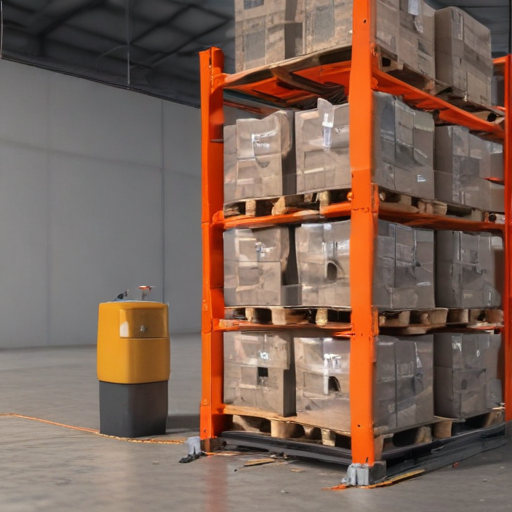
How to use “pallet rack installation”
Pallet rack installation is a critical process in warehouse setup and optimization. To successfully install pallet racks, follow these steps:
1. Plan and Design: Begin with a detailed plan. Assess your warehouse space, considering dimensions and layout. Determine the type and size of pallet racks needed based on the weight and size of your inventory.
2. Gather Tools and Materials: Ensure you have all necessary tools, such as a measuring tape, level, wrench, and screwdriver. Gather components like uprights, beams, and safety clips.
3. Prepare the Site: Clear the installation area of any obstructions. Mark the floor where each upright will be placed to ensure proper alignment.
4. Assemble Uprights: Start by positioning the uprights. Use a level to make sure they are vertical. Attach base plates if required.
5. Install Beams: Connect the horizontal beams to the uprights at the desired height. Secure them with locking pins or bolts. Double-check the alignment and ensure stability.
6. Add Cross Braces and Safety Features: Install any cross braces or diagonal braces to reinforce the structure. Include safety bars or netting as needed to prevent products from falling.
7. Inspect and Adjust: Once assembled, inspect the entire structure for stability and levelness. Make any necessary adjustments to ensure the racks are secure and safe.
8. Load Capacity Labels: Clearly label each rack with its load capacity. This information is crucial for safety and compliance with regulations.
9. Training and Maintenance: Train your staff on the proper use of the pallet racks. Regularly inspect and maintain the racks to ensure they remain in good condition.
By carefully planning and following these steps, you can achieve a safe and efficient pallet rack installation, optimizing your warehouse space and improving productivity.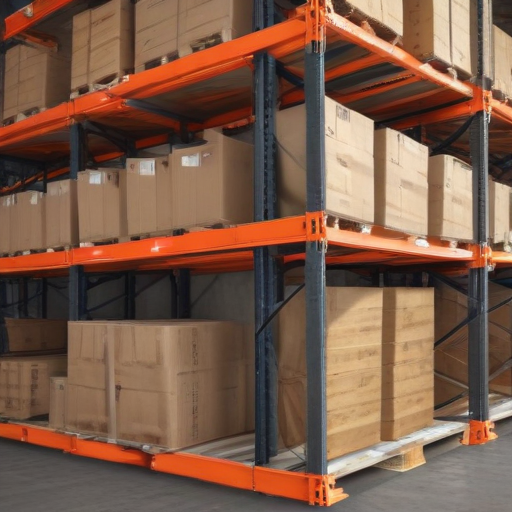
“pallet rack installation” Comparative Analysis
Pallet rack installation, a critical component in warehouse and storage design, varies widely depending on the system type, installation complexity, safety requirements, and cost factors. This comparative analysis will explore key elements of different pallet rack installation methods.
Types of Pallet Racks:
1. Selective Pallet Racks are the most common. They offer direct access to each pallet and are straightforward to install but require ample aisle space.
2. Drive-In/Drive-Through Racks enhance storage density but demand precise installation to ensure structural stability and safety.
3. Push-Back Racks provide high-density storage and are relatively easy to install compared to drive-in systems but require attention to the rolling mechanism.
4. Pallet Flow Racks (Gravity Flow) involve complex installation due to inclined tracks and mechanisms that maintain pallet movement.
Installation Complexity:
– Selective Racks are simple and quick to install, often requiring minimal technical expertise and tools.
– Drive-In/Drive-Through Racks need precise alignment and anchoring, typically necessitating professional installation.
– Push-Back Racks have intermediate complexity, as installers must ensure the roll-back systems are correctly set up.
– Pallet Flow Racks are the most complex due to their intricate design, necessitating expert installation for operational efficiency and safety.
Safety Considerations:
Selective racks are inherently safer in terms of installation, involving fewer structural components. Drive-in and flow racks pose higher risks during installation due to their structural demands and moving parts, necessitating thorough safety checks.
Cost Factors:
– Selective Racks: Lower installation costs due to simplicity and ease.
– Drive-In/Drive-Through: Moderate to high costs due to precision requirements.
– Push-Back Racks: Generally moderate installation costs.
– Pallet Flow Racks: Higher installation costs due to complexity.
Conclusion:
The choice of pallet rack system impacts installation complexity, safety, and costs. Selective pallet racks offer ease of installation and lower costs, whereas drive-in, push-back, and pallet flow systems, while providing greater storage efficiency, come with higher installation complexity and costs.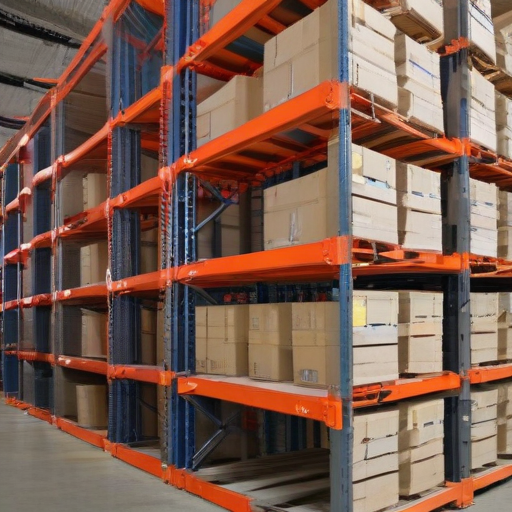
“pallet rack installation” Warranty and Support
Pallet Rack Installation: Warranty and Support
When investing in pallet rack systems, understanding the warranty and support options available is crucial for long-term reliability and performance. Most reputable manufacturers and suppliers offer comprehensive warranties that cover defects in materials and workmanship, typically ranging from one to ten years. This warranty ensures that any defective components will be repaired or replaced at no additional cost, safeguarding your investment.
Support services often include detailed installation guides, video tutorials, and phone or online customer service to assist you through the installation process. Some suppliers also offer professional installation services, which can be invaluable for ensuring that your pallet rack system is installed correctly and safely. Proper installation is vital for maximizing load capacity and stability, as well as complying with industry safety standards.
Additionally, ongoing support after installation can include regular maintenance checks, safety inspections, and troubleshooting assistance. These services help extend the life of your pallet rack system and ensure it continues to operate efficiently and safely over time.
Before finalizing your purchase, thoroughly review the warranty terms and support services offered. Look for suppliers who provide easy access to customer service and technical support, as this will be invaluable for addressing any issues that may arise during the lifespan of your pallet rack system. Investing in a supplier with robust warranty and support options will provide peace of mind and long-term value.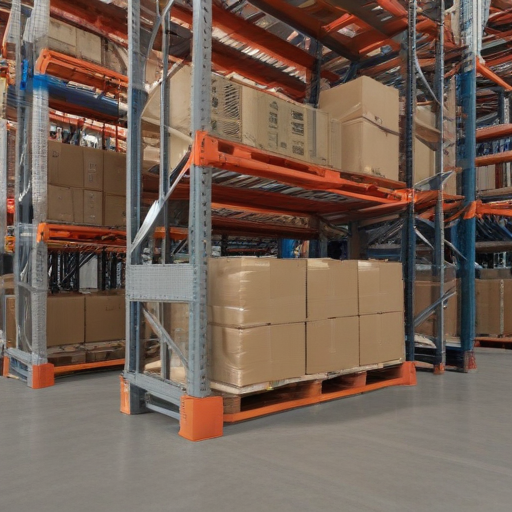
List “pallet rack installation” FAQ
Pallet Rack Installation FAQ
1. What is a pallet rack system?
A pallet rack system is a storage solution used in warehouses and retail environments to store pallets of goods efficiently. The racking system consists of beams and uprights that create shelves for storing palletized products.
2. What types of pallet racks are available?
Common types of pallet racks include selective racks, drive-in/drive-through racks, push-back racks, and pallet flow racks. Each type serves different storage needs and space considerations.
3. Do I need a professional to install my pallet rack system?
While some businesses may be able to handle installation in-house, hiring a professional ensures proper and safe installation, compliance with regulations, and optimal space utilization.
4. What are the safety concerns with pallet rack installation?
Safety concerns include improper anchoring, overloading racks, insufficient safety measures, and not adhering to seismic zone requirements. Always follow manufacturer guidelines and industry standards.
5. How long does it take to install a pallet rack system?
The installation time varies depending on the size and complexity of the system. It can take from a few hours to several days. A professional assessment will give a more accurate timeline.
6. What are the load capacity considerations?
Each rack system has a specified load capacity. Exceeding this capacity can lead to structural failure. Always refer to the manufacturer’s specifications and clearly mark load limits.
7. How do I maintain my pallet rack system?
Regular maintenance includes checking for damage, ensuring bolts are tight, and replacing any compromised parts. Routine inspections help to prevent accidents and extend the life of the rack system.
8. Can I add to or modify my existing rack system?
Yes, most pallet racks are modular and can be expanded or reconfigured. Consult the manufacturer or a professional installer to ensure modifications meet safety standards.
9. What are the cost factors involved?
Costs vary based on rack type, material quality, installation complexity, and any additional safety features. Obtain multiple quotes to compare prices and services.
10. Are permits required for installation?
Permits may be required depending on local building codes and the size of the installation. Check with local authorities to ensure compliance.
Always consult with professionals to ensure a safe and efficient pallet rack installation tailored to your specific needs.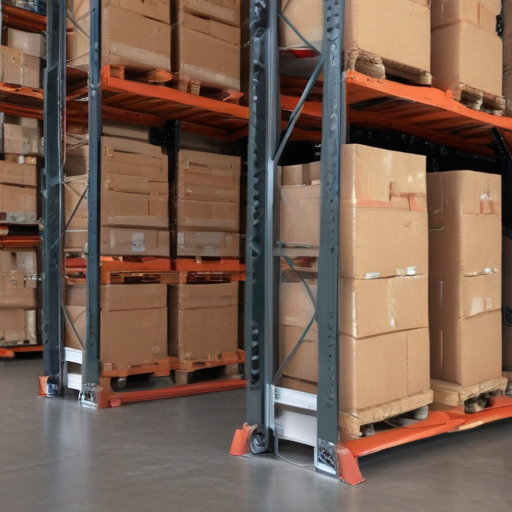
Top 10 FAQ with answer about pallet rack installation for Buyer Sourcing from China
Certainly! Here are the top 10 frequently asked questions (FAQs) about pallet rack installation for buyers sourcing from China, along with concise answers:
1. What are the primary components of a pallet rack system?
– The primary components include uprights (vertical frames), beams (horizontal supports), wire decks, and safety clips. Additional accessories may include spacers, pallet supports, and load stops.
2. How do I ensure the quality and compliance of the pallet racks?
– Verify that the supplier complies with international standards such as ISO, RMI, and FEM. Request material certificates, load capacity specifications, and inspect sample products if possible.
3. What are the common types of pallet rack systems available?
– The common types are selective racking, drive-in racking, push-back racking, pallet flow racking, and cantilever racking.
4. How do I determine the right type of racking for my needs?
– Assess your storage requirements, inventory type, warehouse layout, and load capacity. Consulting with a storage solutions expert can help in making an informed decision.
5. What are the typical lead times for pallet rack orders from China?
– Lead times can vary but generally range from 4 to 8 weeks, including production and shipping. Custom orders may take longer.
6. How do I handle shipping and logistics for pallet racks from China?
– Collaborate with a reliable freight forwarder. Choose between options such as FOB (Free on Board) or CIF (Cost, Insurance, and Freight) depending on your preference for handling shipping and insurance.
7. Are there any specific import regulations or tariffs I should be aware of?
– Import regulations and tariffs vary by country. Check with your local customs authority and ensure that all required documentation, such as certificates of origin and commercial invoices, are in order.
8. How do I maintain and inspect pallet racks after installation?
– Regularly inspect for damage, ensure proper load distribution, and tighten any loose bolts. Schedule periodic professional inspections to ensure safety and compliance.
9. What factors influence the cost of pallet racking systems sourced from China?
– Costs depend on material quality, system complexity, order volume, and customizations. Shipping and tariffs also affect the overall expense.
10. Can I customize the pallet rack design to fit my unique warehouse requirements?
– Yes, most Chinese suppliers offer customization options. Provide detailed specifications, load requirements, and warehouse layout for tailored solutions.
By addressing these FAQs, buyers can make informed decisions when sourcing pallet racks from China, ensuring quality, compliance, and optimal storage solutions.

